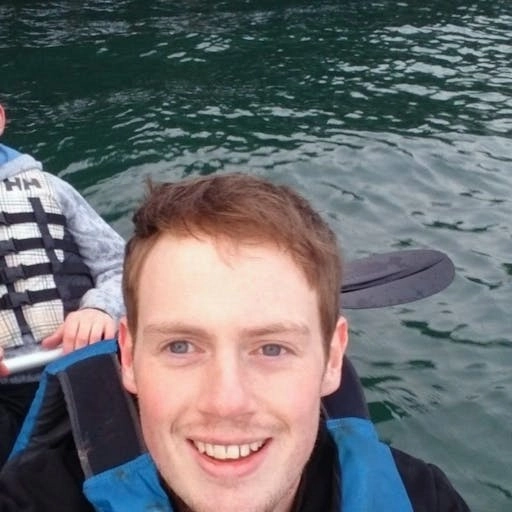Few regions have the reputation of that held by the mysterious 'Bermuda Triangle'. As Barry Manilow's 1980 hit song 'Bermuda Triangle' warned, "don't go too near", but does it really deserve its perilous or paranormal reputation?
Where is the Bermuda Triangle?
The urban legend that is The Bermuda Triangle (or as some call it, Devil's Triangle) is a triangular region loosely between Bermuda, Puerto Rico, and Miami at the tip of Florida.
Ever since the mid-20th century, its existence as an area of mystery and danger has been fiercely defended and disputed, with many stories seemingly supporting mysterious activities. But is it really any more treacherous than anywhere else?
Is the Bermuda Triangle real?
Officially, no. Nonetheless, there are many mysterious stories that have given rise to the Bermuda Triangle theory. These range from logical natural phenomena to wilder theories, such as being caused by leftover technology from the Lost City of Atlantis. Let's explore some of the stories that support the idea of the Bermuda Triangle being real.
Christopher Columbus and the Bermuda Triangle
Our story starts all the way back in 1492, when Italian-born Christopher Columbus was on his maiden voyage to the New World (I bet you didn't know he was Italian!). Columbus and his crew reported to their logs unusual phenomena, such as erratic compass readings, unusual lights, and "great flame of fire".
As well as this, his logs also included sightings of white water. You can probably guess where this was: the area now known as the Bermuda Triangle.
USS Cyclops missing in the Bermuda Triangle
On (or after) March 4th 1918, the single largest loss of life in the history of the US Navy (that wasn't related to combat) occurred when the USS Cyclops went missing in the area known as The Bermuda Triangle.
With one engine out of action, USS Cyclops went missing without a trace. Carrying a full load of manganese ore and a crew of 306, the vessels' disappearance happened after an unscheduled stop at Barbados due to the water level being over the Plimsoll line. With her intended destination being Baltimore, Maryland, she never arrived, and the wreck was never found.
Flight 19 disappearance in the Bermuda Triangle
The next story unfolds on 5 December 1945, Flight 19 was one of five Grumman TBF Avenger torpedo bombers on a training flight when the squadron disappeared in the area known as the Bermuda Triangle.
The flight plan was due to take them from Fort Lauderdale in Florida, 141 miles due east, 73 miles west, with the final 140-mile leg bringing them back to base. They never returned. The story doesn't stop with the disappearance of Flight 19. A PBM Mariner with a 13-man crew was dispatched to search for them, but this too never returned.
Debunking the myth
While mysterious, all these stories can have rational explanations, either by natural phenomena, human error, or civilizations going about their normal days.
Explaining Christopher Columbus' Bermuda Triangle observations
For example, Christopher Columbus' log entries reporting erratic compass readings can be attributed to the natural phenomenon of magnetic declination. This is the angle difference between magnetic north and true north. This was a new observation for European navigators when Columbus observed the behavior aboard the Santa Maria. Specifically, the Bermuda Triangle region is one of the few places where magnetic and true north align, which could have caused unexpected compass abnormalities, which have since shifted further west.
His observations of seeing strange lights could easily have been fires by nearby indigenous islanders, with the ball of fire being explained by meteors entering Earth's atmosphere, a common sight that we can, nowadays at least, explain. Bear in mind, these logs were over a relatively long period of time.
USS Cyclops probably sank in the Bermuda Triangle
Given that the water was over USS Cyclops' Plimsoll line, and given the vessel was fully laden, the likelihood is that she simply sank due to either being overloaded or capsizing in rough seas. USS Cyclops was one of 4 Proteus-class colliers, with two sister ships, Proteus and Nereus, also sinking after being fully laden with ore.
Flight 19 probably got lost and ran out of fuel
Lieutenant Charles C. Taylor was leading the training exercise. After completing the training bombing run, He reported compass malfunctions and believed he was flying over the Florida Keys, when he was likely over the Bahamas. This misidentification, possibly caused by magnetic declination, likely led the flight further out to sea, where they simply ran out of fuel.
As for the PBM Mariner sent to search for the missing Flight 19, Tanker SS Gaines Mills reported seeing an apparent explosion, which burned for some 10 minutes. Captain Shonna Stanley reported unsuccessfully searching for survivors through a pool of oil and aviation gasoline. At the same time, an escort carrier, USS Solomons, reported losing radar contact with an aircraft at the same position reported by SS Gaines Mills.
Officially, the Bermuda Triangle isn't real
Despite its reputation, the Bermuda Triangle isn't statistically any more dangerous than other heavily traveled regions of the world's waters. The U.S. Coast Guard and NOAA (National Oceanic and Atmospheric Administration) have both analyzed incident data in the area and found no significant abnormalities in disappearances. On the contrary, when adjusted for the high volume of sea and air traffic through the so-called Bermuda Triangle, the number of accidents is proportionally consistent with other parts of the Atlantic.
The U.S. government has officially dismissed the idea of the Bermuda Triangle as a region of supernatural danger. The U.S. Navy and Coast Guard have also emphasized that they do not recognize the Bermuda Triangle as an actual geographic area of heightened risk.
Do you disagree? Feel free to express your thoughts and theories in the comments section below!

Your thoughts and comments